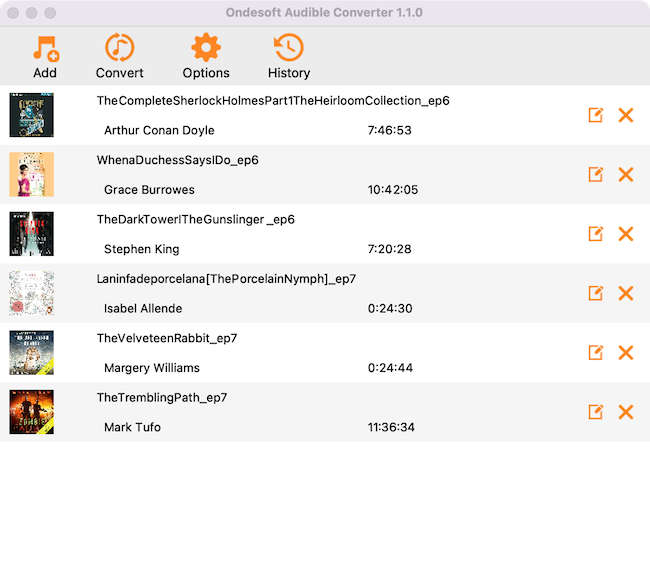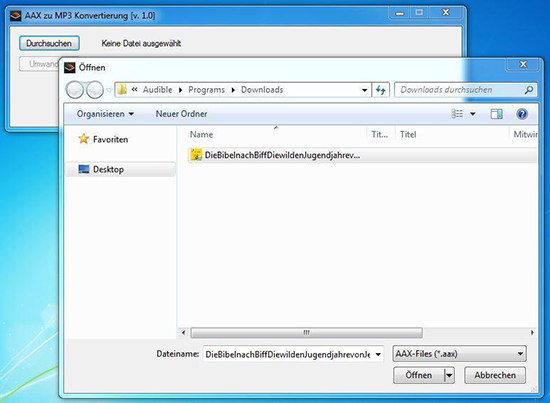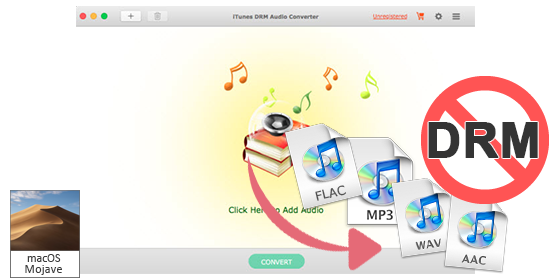

- #AUDIBLE CONVERTER WITHOUT ITUNES INSTALL#
- #AUDIBLE CONVERTER WITHOUT ITUNES PORTABLE#
- #AUDIBLE CONVERTER WITHOUT ITUNES SOFTWARE#
- #AUDIBLE CONVERTER WITHOUT ITUNES SERIES#
- #AUDIBLE CONVERTER WITHOUT ITUNES WINDOWS#
The power supply was then designed by Michael Dhuey and the display design made by Apple design engineer Jonathan Ive in-house. Within eight months, Tony Fadell's team and PortalPlayer had completed a prototype.

#AUDIBLE CONVERTER WITHOUT ITUNES SOFTWARE#
Fadell partnered with a company called PortalPlayer to design the software for the new Apple music player which became the iPod OS. Time constraints forced Fadell to develop various components of the iPod outside Apple. Due to the engineers and resources at Apple being constrained with the iMac line, Fadell hired engineers from his startup company, Fuse, and veteran engineers from General Magic and Philips to build the core iPod development team. įadell found support for his project with Apple Computer and was hired by Apple in 2001 as an independent contractor to work on the iPod project, then code-named project P-68. Rubinstein had already discovered the Toshiba hard disk drive while meeting with an Apple supplier in Japan, and purchased the rights to it for Apple, and had also already worked out how the screen, battery, and other key elements would work.

/convert-itunes-mp3-b97bfb03f6d747e3bb07ffff1d8daf7d.jpg)
Fadell, who had previously developed the Philips Velo and Nino PDA, had started a company called Fuse Systems to build the MP3 player and had been turned down by RealNetworks, Sony and Philips. Īs ordered by CEO Steve Jobs, Apple's hardware engineering chief Jon Rubinstein contacted Tony Fadell, a former employee of General Magic and Philips who had a business idea to invent a better MP3 player and build a music sales store to complement it. Apple thought flash memory-based players didn't carry enough songs and the hard drive based ones were too big and heavy so the company decided to develop its own.
#AUDIBLE CONVERTER WITHOUT ITUNES PORTABLE#
Portable MP3 players had been around since the mid-1990s, but Apple found existing digital music players "big and clunky or small and useless" with user interfaces that were "unbelievably awful". From left to right: iPod Video, iPod 4th Generation, iPod Mini, iPod Nano, iPod Shuffle. During the middle of 2010, iPhone sales overtook those of the iPod. While the iPhone and iPad have essentially the same media player capabilities as the iPod line, they are generally treated as separate products. As of iOS 5, separate Music and Videos apps are standardized across all iOS-powered products. īefore the release of iOS 5, the iPod branding was used for the media player included with the iPhone and iPad, which was separated into apps named "Music" and "Videos" on the iPod Touch.
#AUDIBLE CONVERTER WITHOUT ITUNES WINDOWS#
Prior to macOS 10.15, Apple's iTunes software (and other alternative software) could be used to transfer music, photos, videos, games, contact information, e-mail settings, Web bookmarks, and calendars to the devices supporting these features from computers using certain versions of Apple macOS and Microsoft Windows operating systems. Like other digital music players, some versions of the iPod can serve as external data storage devices. As of 2022, only the 7th-generation iPod Touch remains in production. The first version was released on October 23, 2001, about 8 + 1⁄ 2 months after the Macintosh version of iTunes was released.
#AUDIBLE CONVERTER WITHOUT ITUNES SERIES#
Click the Converted button or the Open button to find the Audible audiobooks you just convert.The iPod is a series of portable media players and multi-purpose mobile devices designed and marketed by Apple Inc. You can drag the files directly to the software. Launch this TunesKit Audible AAX/AA Converter. It will maintain the ID3 tags and the chapter information of audiobooks.
#AUDIBLE CONVERTER WITHOUT ITUNES INSTALL#
In addition, it does not need you to offer the iTunes account authorization or install the Audible app. You can also use the Lossless option to keep the original quality of the audiobooks. It can convert AA/AAX to many formats like MP3, M4A, FLAC, AAC, AAC with 100X faster speed. But I find a good solution - you need to use an Audible converter to convert Audible AAX to MP3. But I feel it really inconvenient to listen to Audible audiobooks when I want to use other devices to play them like my smartwatch. And I use Audible to listen to them since Audible really owns lots of audiobooks.


 0 kommentar(er)
0 kommentar(er)
